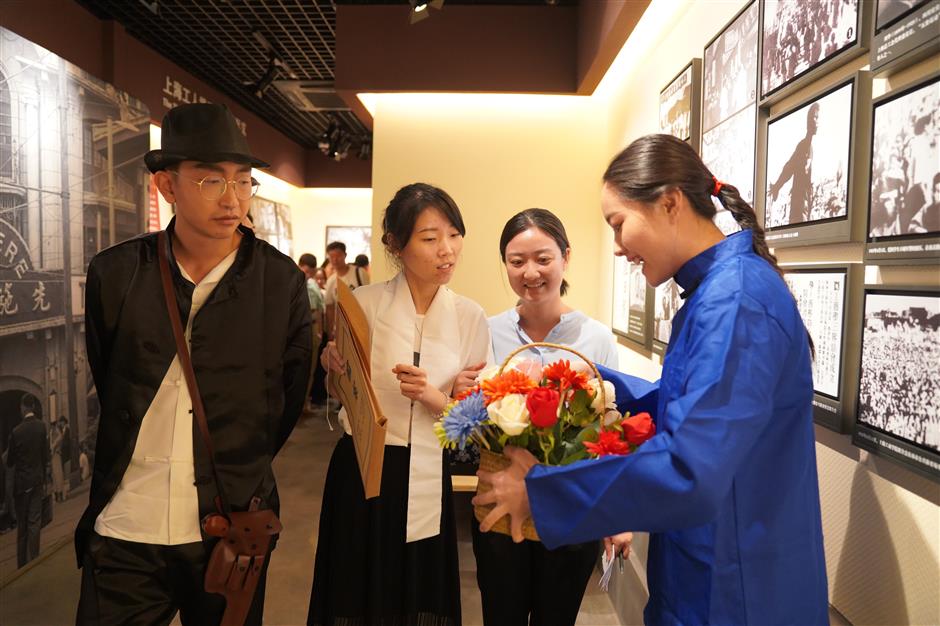Party's memorial present history in immersive theater

Visitors play roles as Party members and learn how to engage in underground work.
A revolutionary site in Jing’an District turned itself to an immersive theater on Friday where visitors took part in an interactive tour and experienced historic events.
Usually, revolutionary sites are deemed dogmatic and old-fogey. But the Memorial of the Central Bureau of the Communist Party of China after the Third National Congress has broken that stereotyped image by introducing the interactive ways of storytelling as to attract young people to the history of the Party during turbulent times.
On Friday, the 1,100-square-meter memorial was turned to an immersive theater, with the background of the Shanghai in the 1923 when the newly-born CPC was mainly engaging in underground work.
Tens of primary school students and their parents were ordered to follow clues and “completed the mission” to pass “secret information” to an underground Party member. They decoded password, made invisible ink message and figured out who was the right asset.
It made them feel like actors and actresses in spy movie, but it was exactly what happened about a century ago. In turbulent times, Party members risked and devoted their lives to the revolutionary work.

Visitors have to obtain the clues from performers and complete their mission.
“Today’s memorials and museums should not only attract people to step in but also should have visitors participated. The spirit what we want to send will be rooted in their hearts only after they really experience the historic events,” said Ma Jingran, director of the district’s history archive.
The Party’s third national congress was held in June 1923 in Guangzhou, capital of south China’s Guangdong Province. After that, the Party moved back to Shanghai and founded its headquarters in a shikumen building on today’s Linshan Road.
The Party false claimed the building was used as office for a tax declaration company as to facilitate its revolutionary work. There, the Party’s senior officials held meetings and made important decisions. The building was blown down in the Songhu Battle in 1932, an armed engagement in the Sino-Japanese War.
Today’s memorial locates a in a historical building on 118 Zhejiang Road N.















